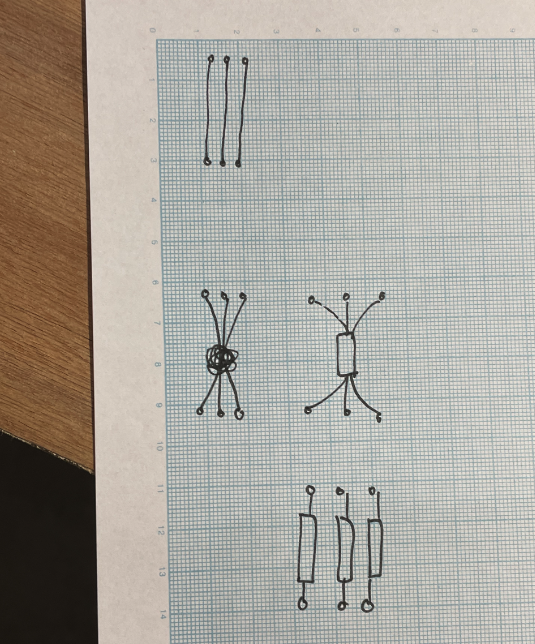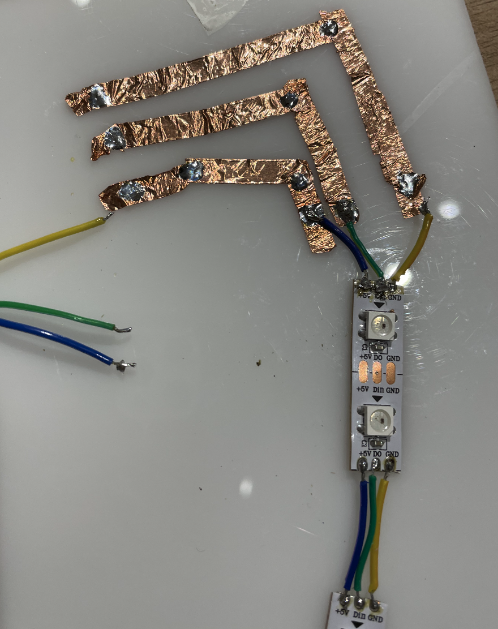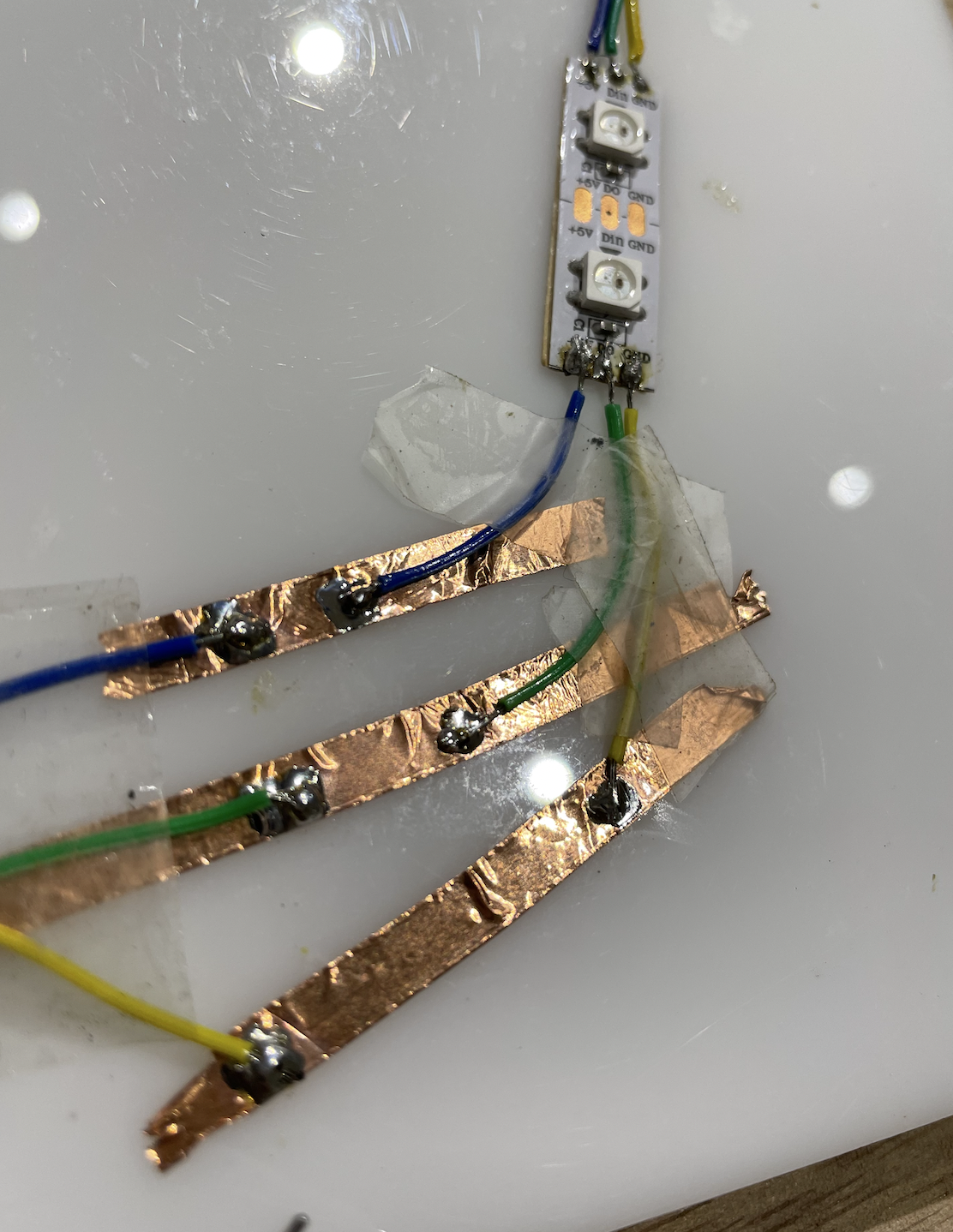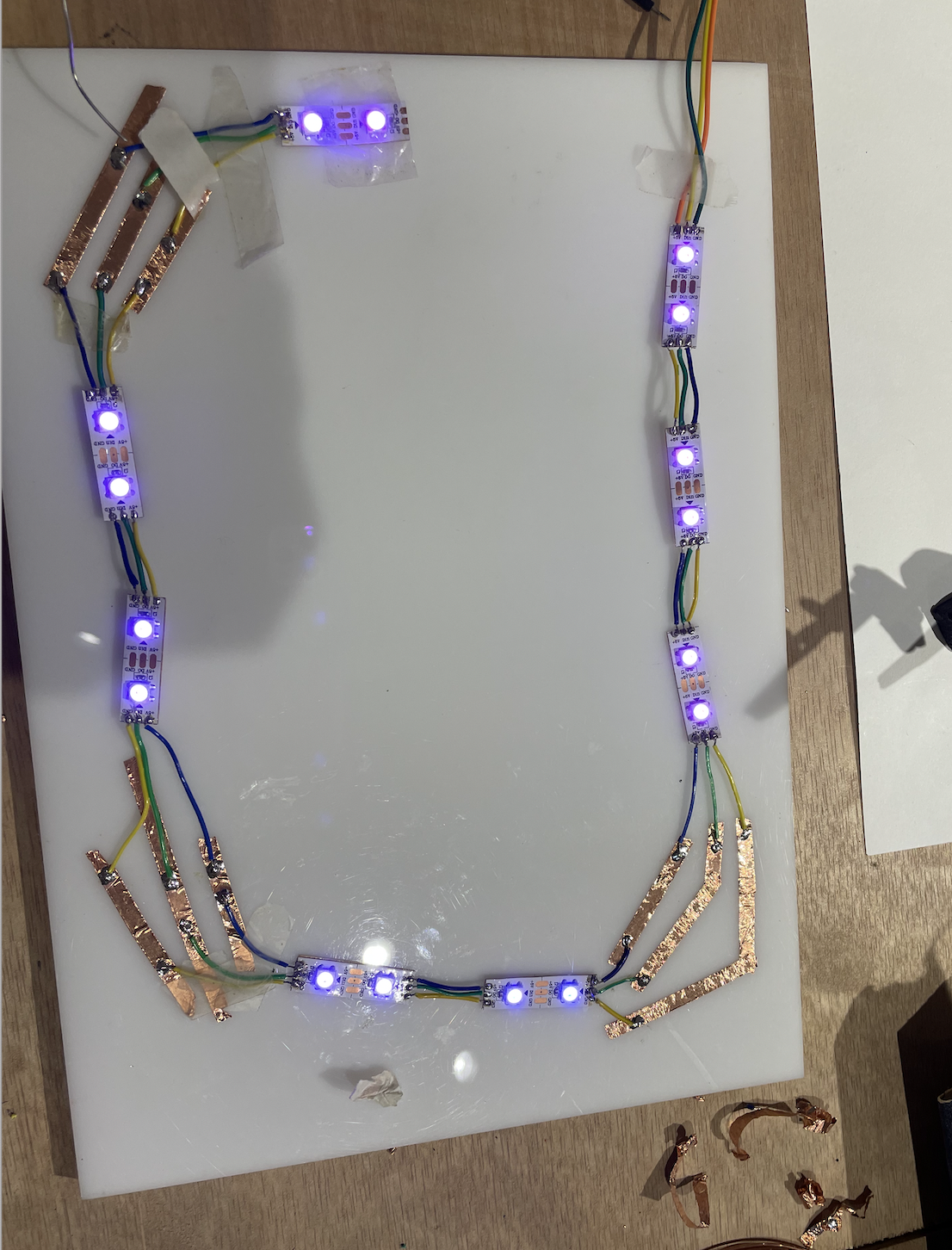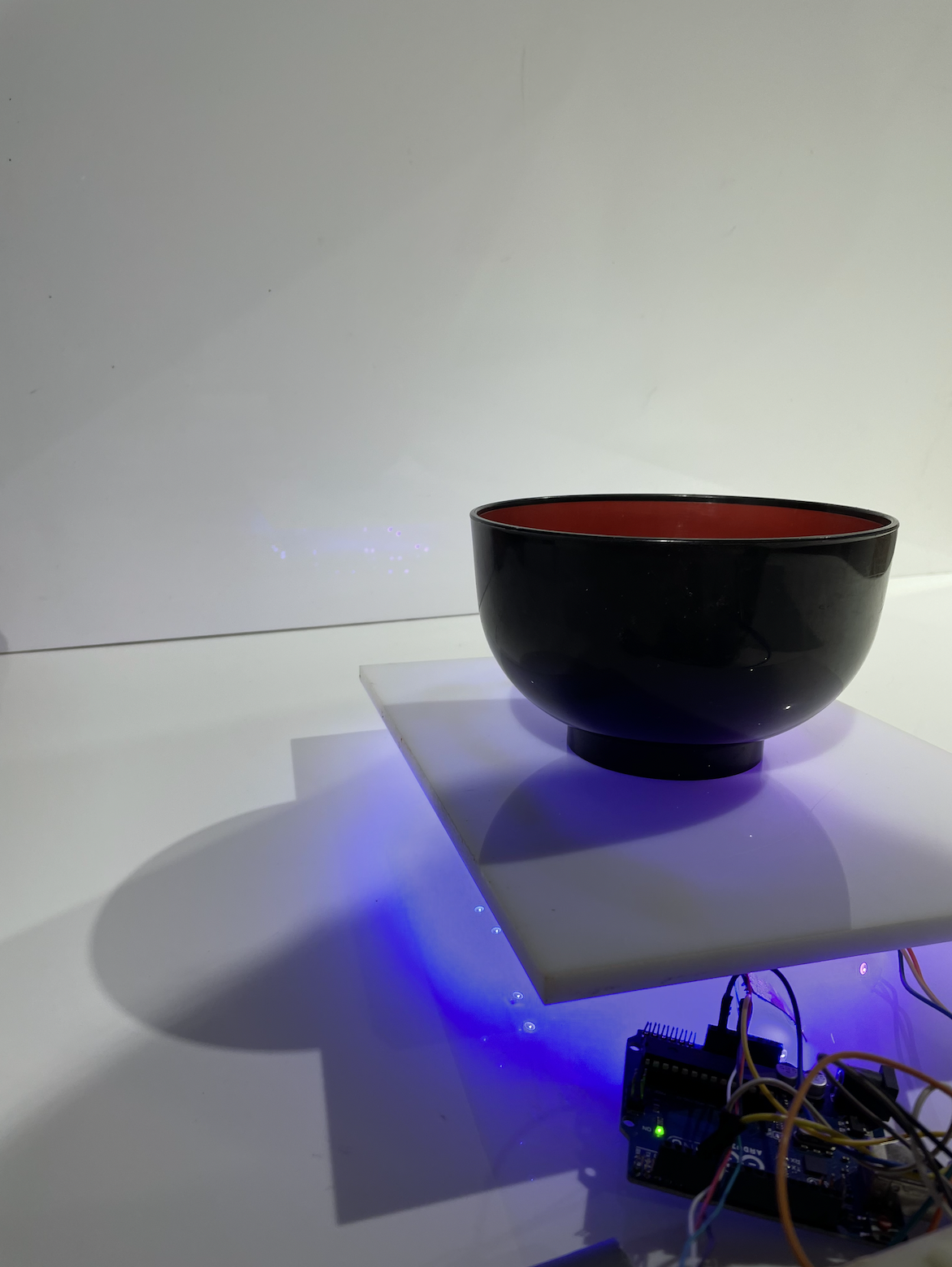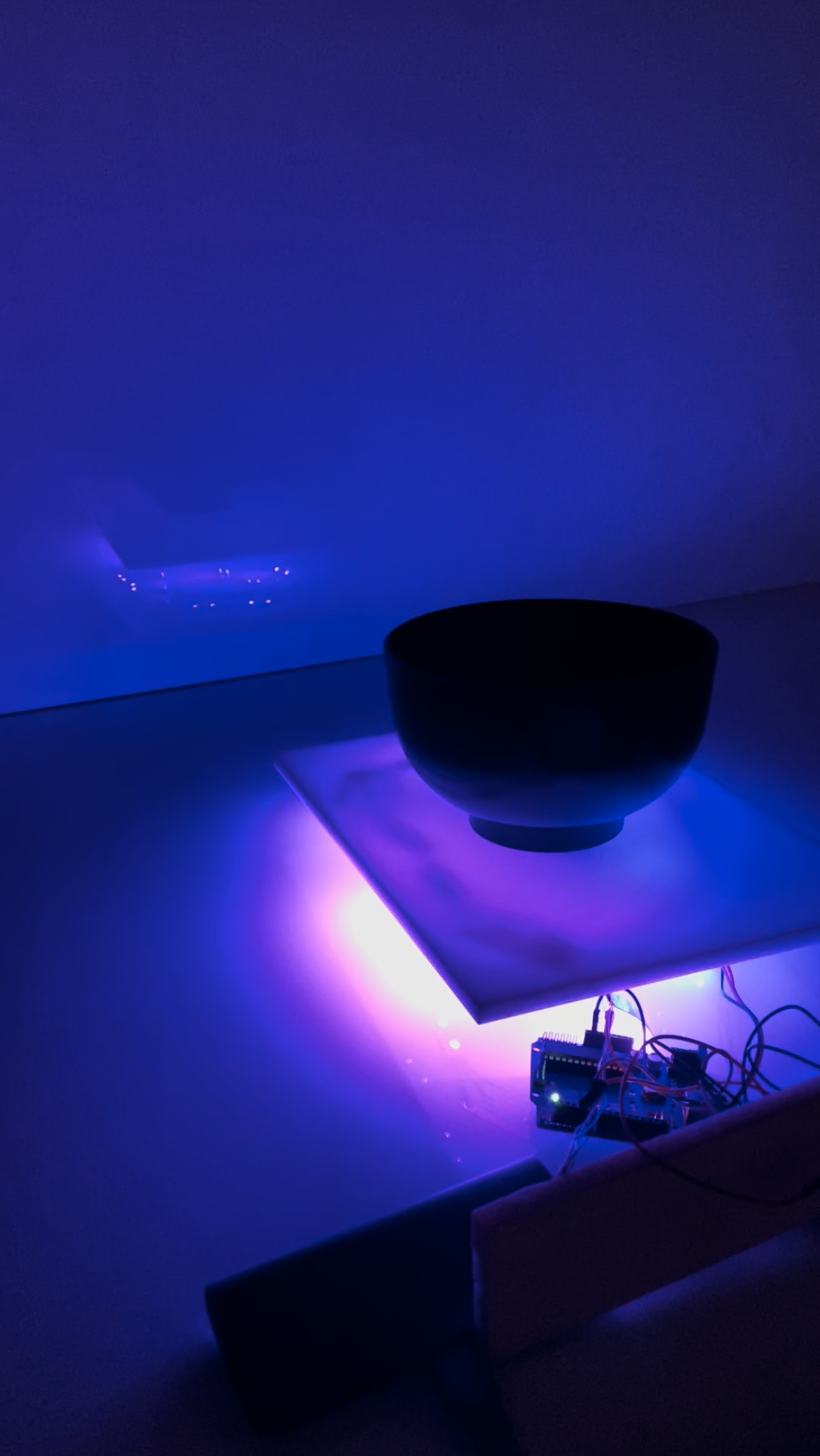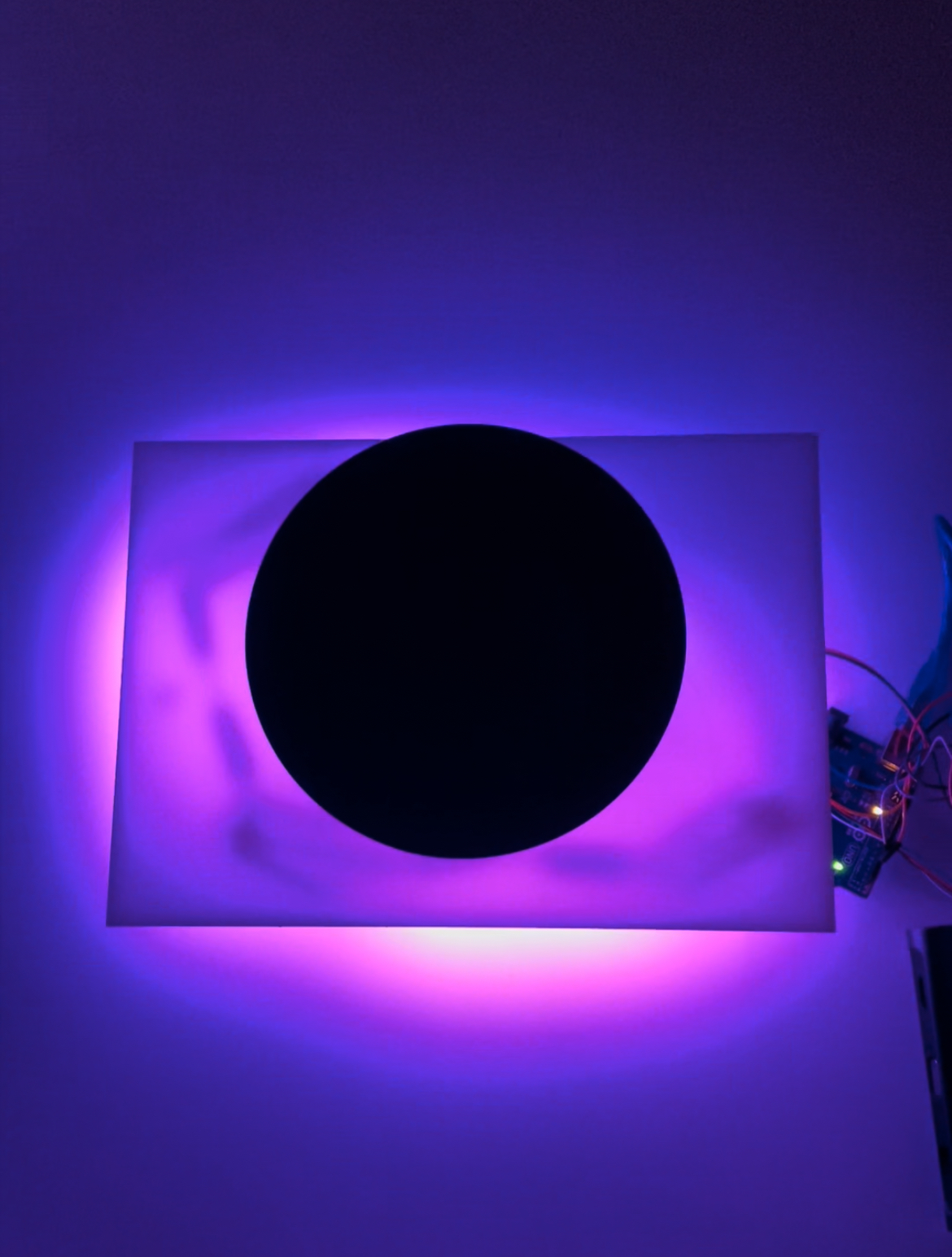Monday
The plan was to borrow the soldering machine from Andreas to get my circuit LEDS running again. And this time learning from the mistake of curving my wires which made it more prone to breaking the soldered wire connections between the strips.
Looking back at the main tutorial I referenced to create this table, the person in the video had soldered the LED’s 3 points, ground 5V and - to a copper to connect all these LED points to one main-stream of voltage.
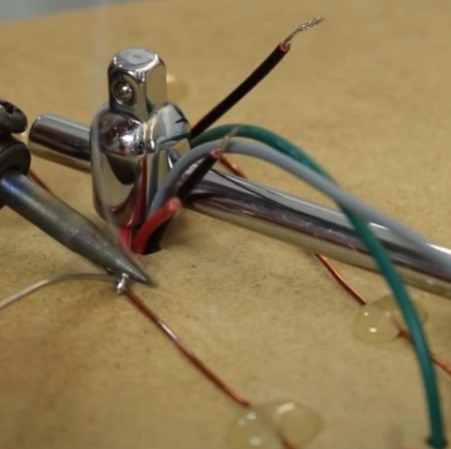
I drew out the way I could use this method by drawing a circuit that follows the shape of the white acrylic sheet since the sides emulating the light are more prone to be seen once the acrylic sheet is flipped over.
My LED strip wouldn’t light up even after soldering the wires to the copper tape. I persisted and kept checking each wire to see if they were connected properly. I even tried sanding down a copper wire but it did not work as well.
After that Aditi then, discovered that this issue could have been caused because all the different power points were travelling into the same stream through the copper tape and 3 individual wire points should be made instead. She demonstrated this to me in a diagram to help me understand the flow better. This made me more informed about important these 3 streams are for RGB LED strips especially.
After trying to separate the copper strips for each wire, it still refused to light up.. I was pretty confused at this point, questioning if the copper strip was really a useful conductor in completing the circuit’s flow. Nonetheless, I wondered is this time the issue could be my messily over layed strips of copper tape instead of just using one singular long strip, I had gathered many shorter strips together.



